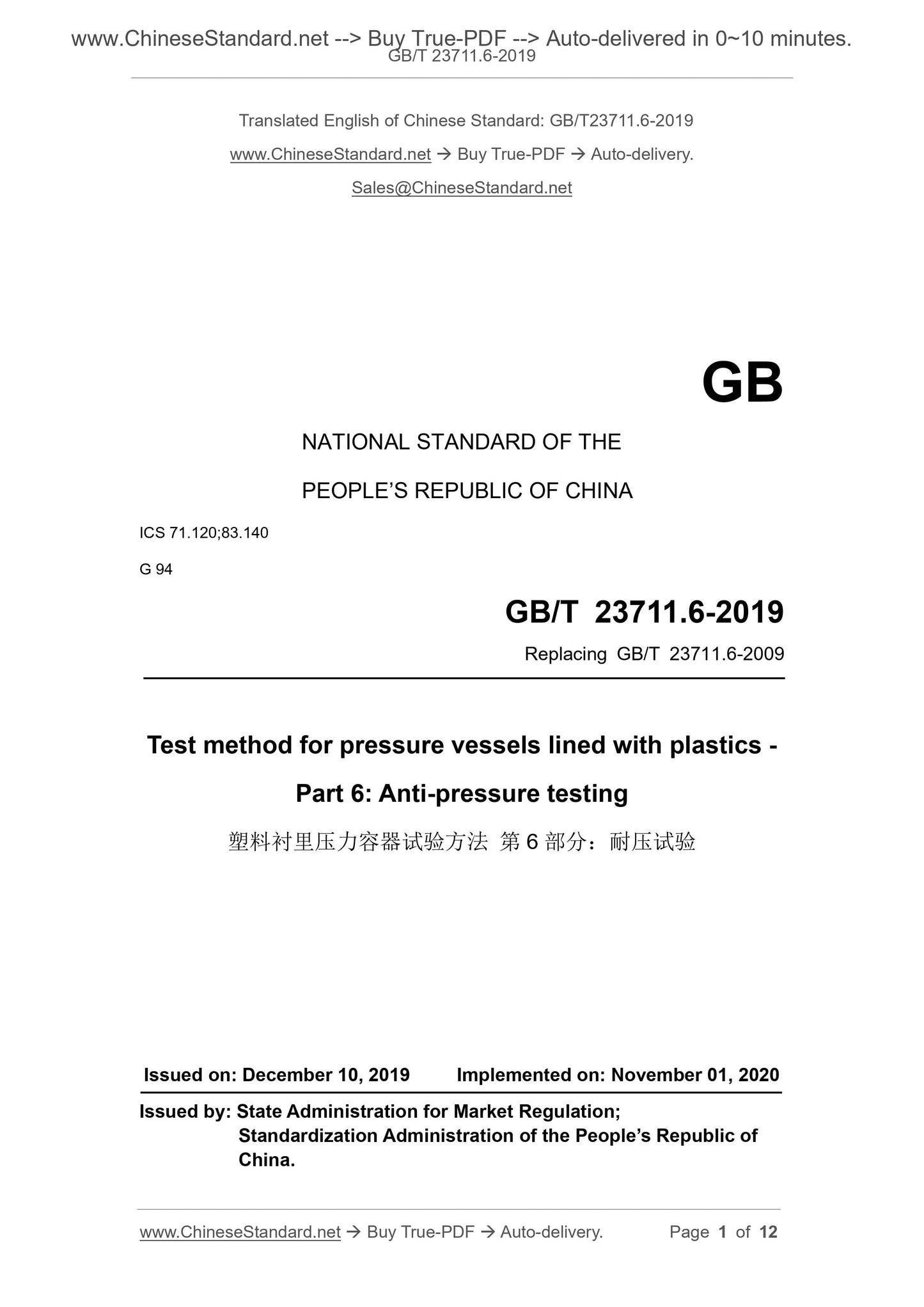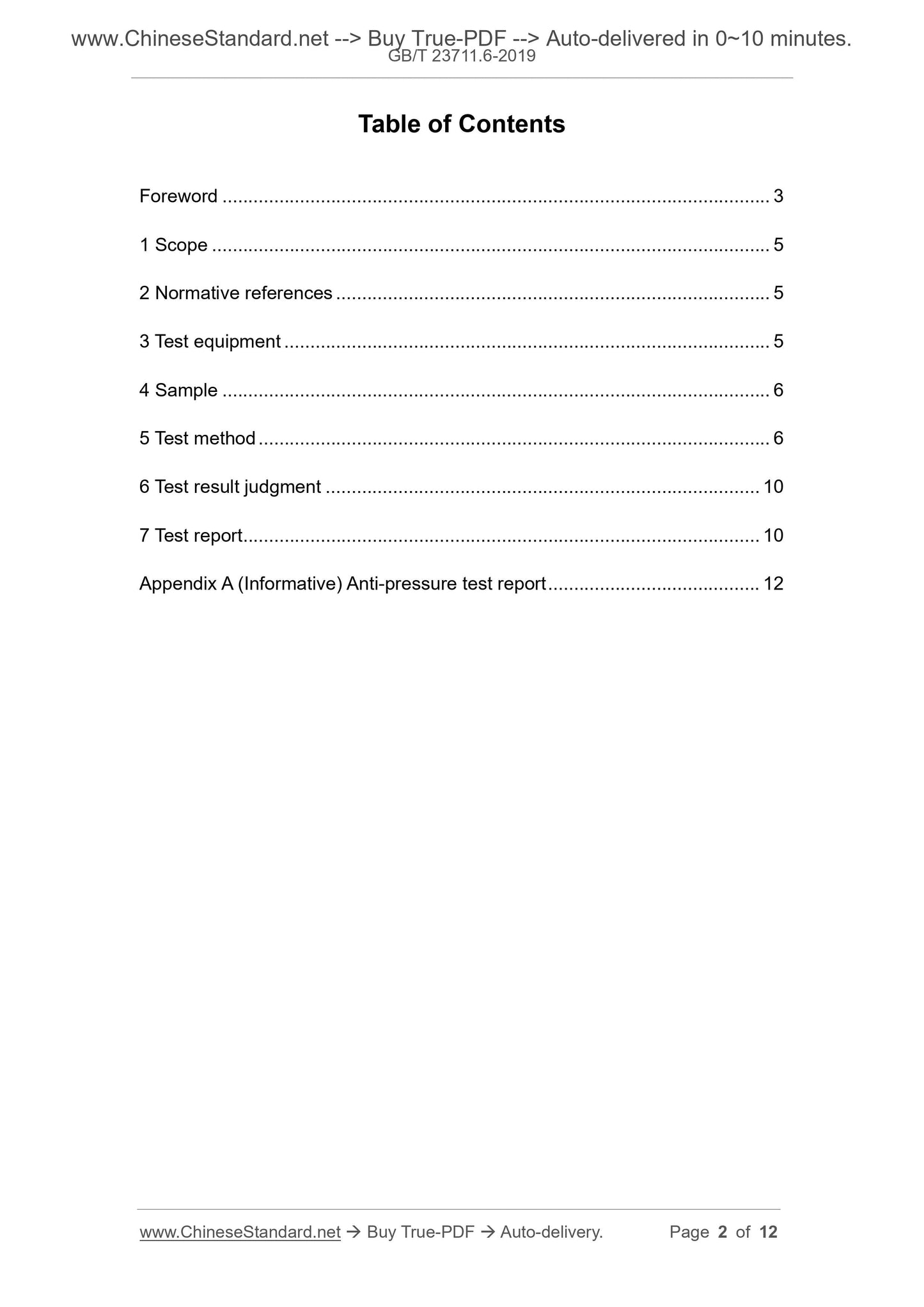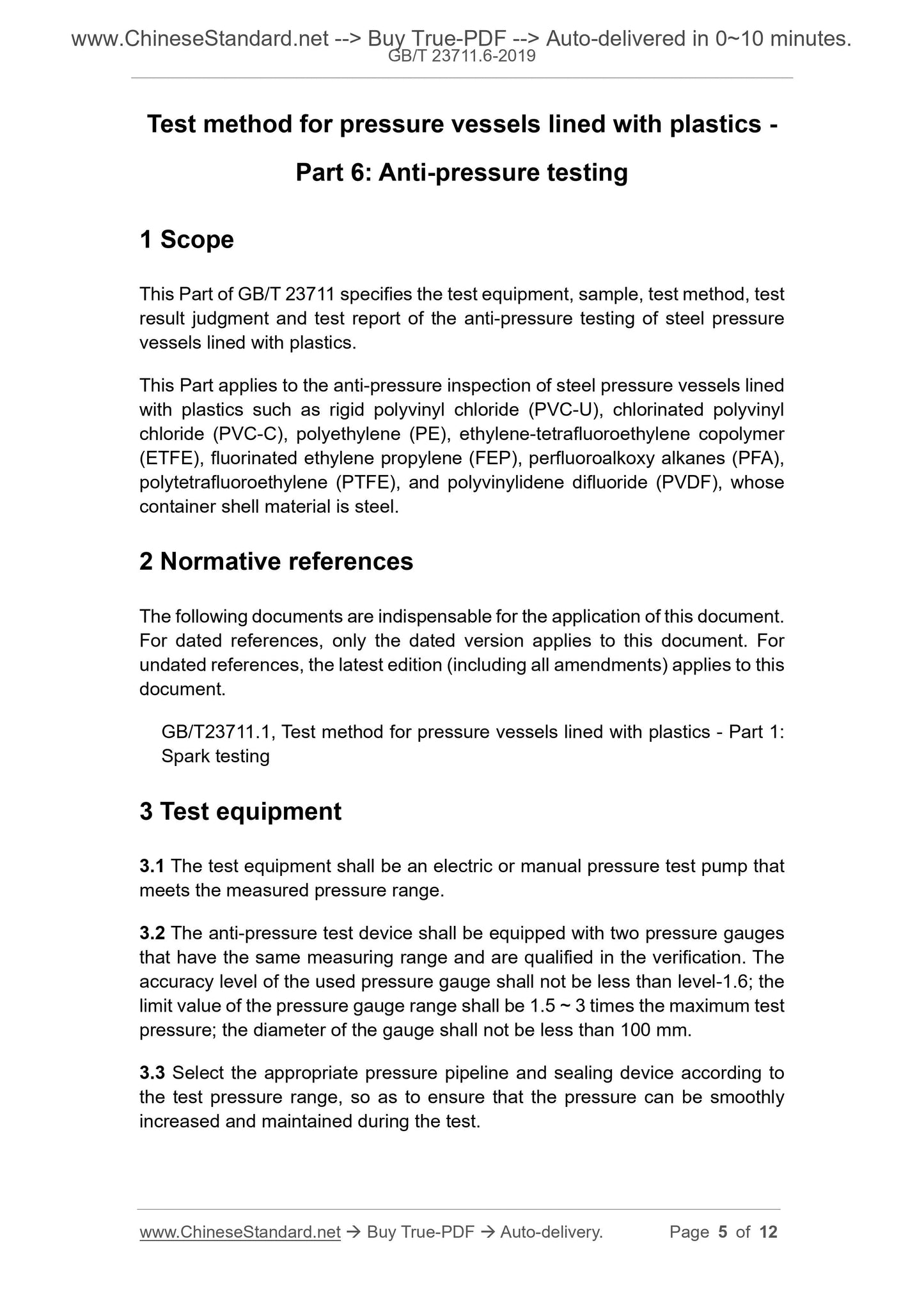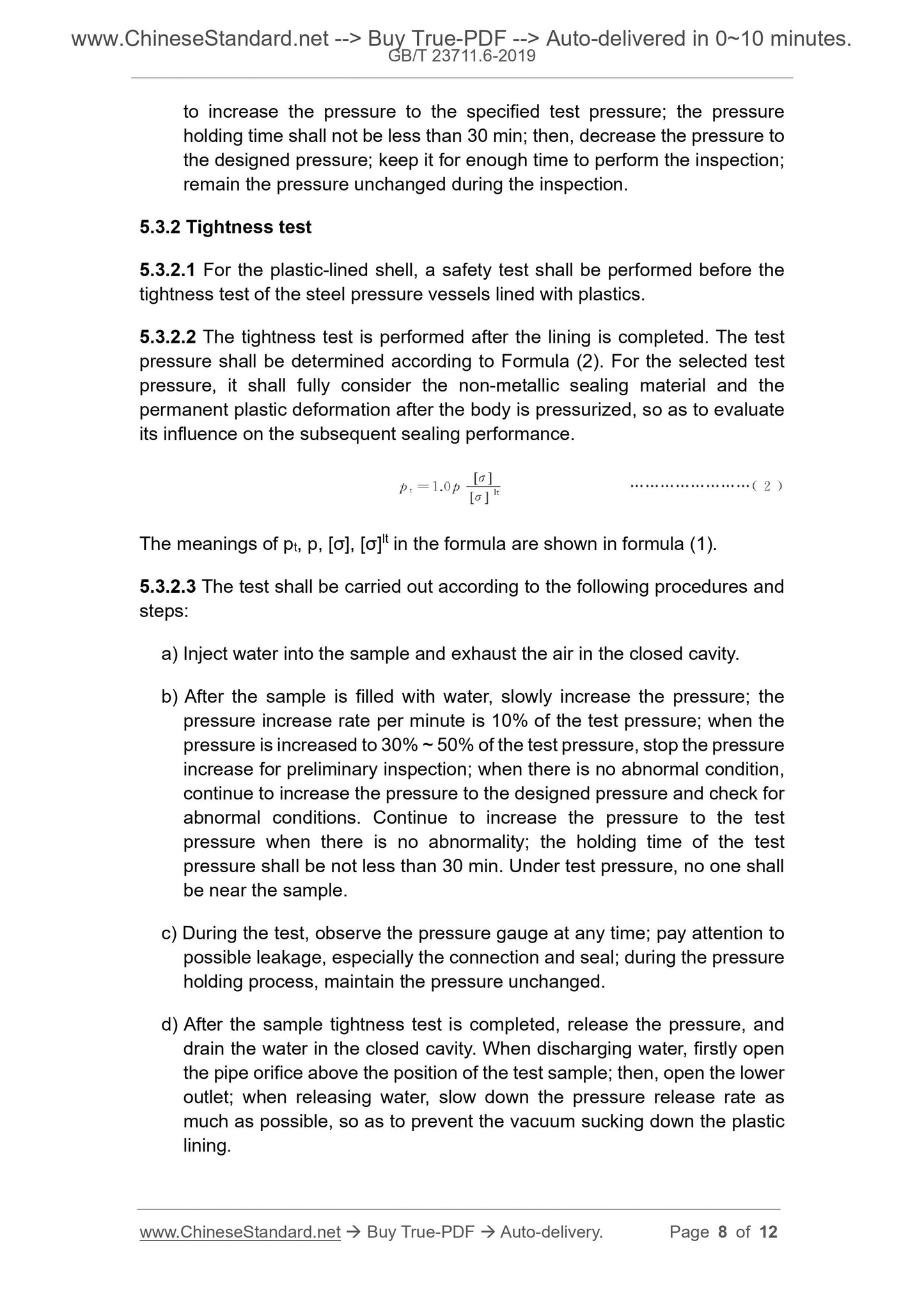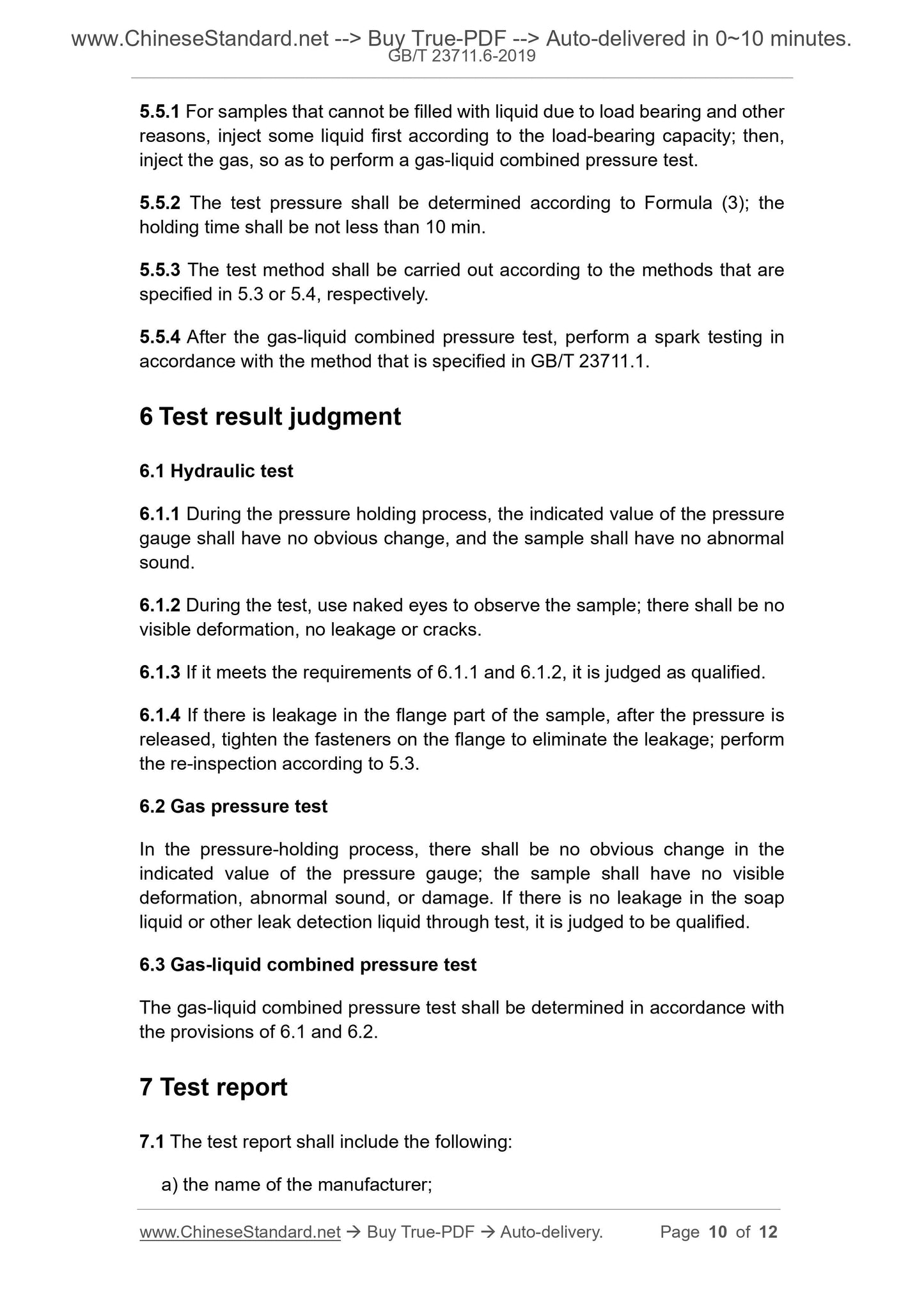1
/
of
5
www.ChineseStandard.us -- Field Test Asia Pte. Ltd.
GB/T 23711.6-2019 English PDF (GB/T23711.6-2019)
GB/T 23711.6-2019 English PDF (GB/T23711.6-2019)
Regular price
$175.00
Regular price
Sale price
$175.00
Unit price
/
per
Shipping calculated at checkout.
Couldn't load pickup availability
GB/T 23711.6-2019: Test method for pressure vessels lined with plastics - Part 6: Anti-pressure testing
Delivery: 9 seconds. Download (and Email) true-PDF + Invoice.Get Quotation: Click GB/T 23711.6-2019 (Self-service in 1-minute)
Newer / historical versions: GB/T 23711.6-2019
Preview True-PDF
Scope
This Part of GB/T 23711 specifies the test equipment, sample, test method, testresult judgment and test report of the anti-pressure testing of steel pressure
vessels lined with plastics.
This Part applies to the anti-pressure inspection of steel pressure vessels lined
with plastics such as rigid polyvinyl chloride (PVC-U), chlorinated polyvinyl
chloride (PVC-C), polyethylene (PE), ethylene-tetrafluoroethylene copolymer
(ETFE), fluorinated ethylene propylene (FEP), perfluoroalkoxy alkanes (PFA),
polytetrafluoroethylene (PTFE), and polyvinylidene difluoride (PVDF), whose
container shell material is steel.
Basic Data
| Standard ID | GB/T 23711.6-2019 (GB/T23711.6-2019) |
| Description (Translated English) | Test method for pressure vessels lined with plastics - Part 6: Anti-pressure testing |
| Sector / Industry | National Standard (Recommended) |
| Classification of Chinese Standard | G94 |
| Classification of International Standard | 71.120; 83.140 |
| Word Count Estimation | 10,188 |
| Date of Issue | 2019-12-10 |
| Date of Implementation | 2020-11-01 |
| Issuing agency(ies) | State Administration for Market Regulation, China National Standardization Administration |
Share
